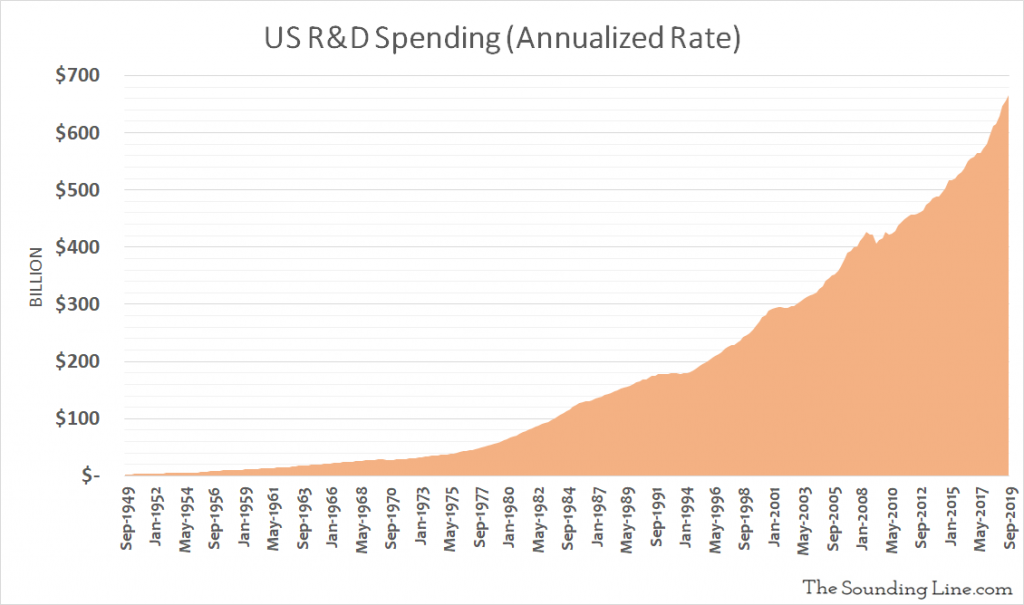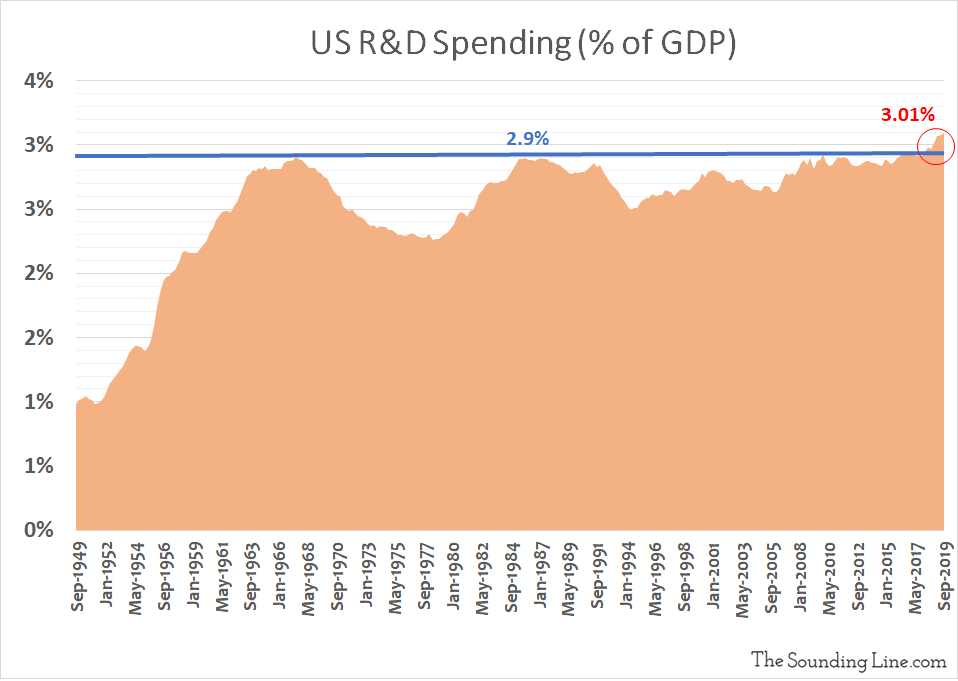Submitted by Taps Coogan on the 11th of December 2019 to The Sounding Line.
Enjoy The Sounding Line? Click here to subscribe for free.
Enjoy The Sounding Line? Click here to subscribe.
In the third quarter of 2019, R&D spending in the United States hit an annualized rate of $666 billion or 3.01% of GDP, marking the highest level of R&D spending on record, both in nominal dollar value and as a percentage of GDP.


After a rapid expansion following WWII, R&D spending as a percent of GDP peaked at 2.9% in 1967. It then began to decline as rising inflation ate into corporate and public balance sheets in the late 1960s and 1970s. After bottoming with the peak of inflation in the late 1970s and early 1980s, R&D spending climbed back to 2.9% of GDP in 1987, before declining once again in the early 1990s. After a gradual rise since the mid-2000s, R&D spending finally broke through the 3% level for the first time in the fourth quarter of 2018 as the effects of the Tax Cuts and Jobs Act kicked in, which allows for the immediate depreciation of R&D expenses. The depreciation clause of the tax bill will sunset in 2022. The business sector performs about three-quarters of all R&D spending in the US.
As an aside, despite the rise in R&D spending, corporate stock buybacks by the 500 companies that comprise the S&P 500 substantially outpace all R&D spending in the US.
Would you like to be notified when we publish a new article on The Sounding Line? Click here to subscribe for free.
Would you like to be notified when we publish a new article on The Sounding Line? Click here to subscribe for free.

